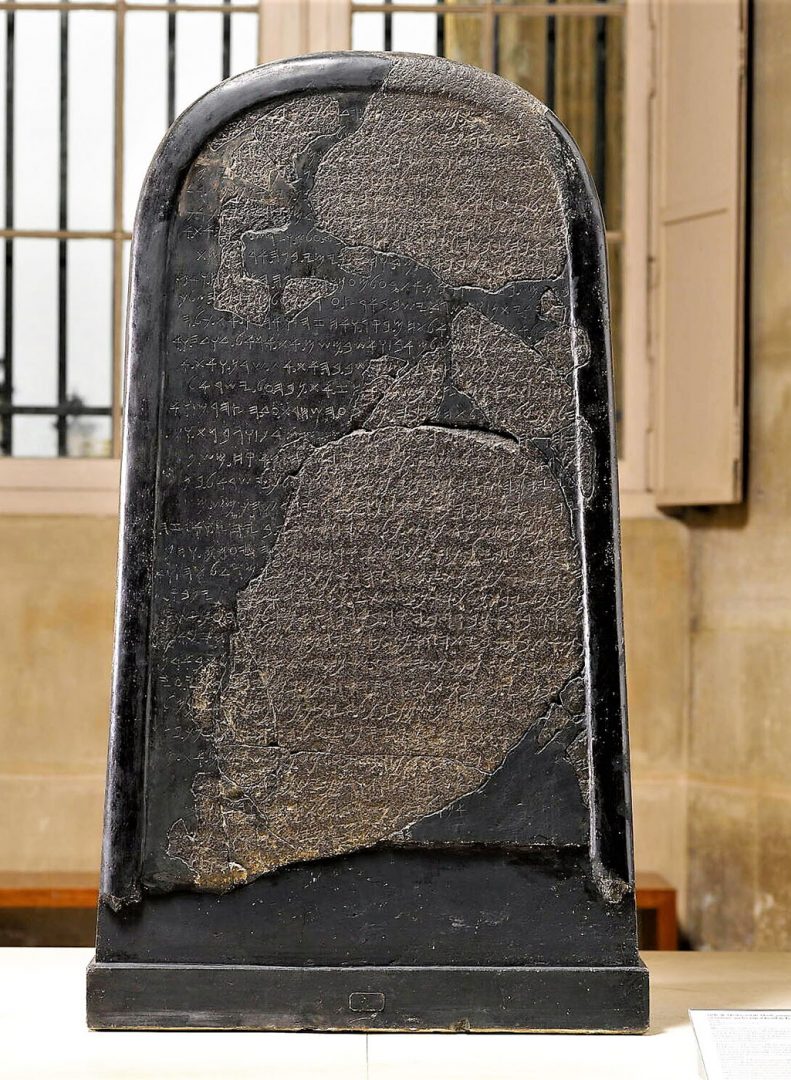
PARIS – New readings of text on the Moabite Stone studied for 150 years give new evidence that the stone includes an extra-biblical reference to King David, scholars have announced.
The latest reading reveals previously illegible characters to complete the phrase “the House of David” on the 31st line of the 34-line inscription written in the ninth century B.C., scholars assert in the current issue of the Biblical Archeology Review.
Southern Baptist archeologist and theologian Jim Parker affirms the latest interpretation of the stone that records the victorious battles of King Mesha, who ruled in the mid-ninth century B.C. what is now known as Dhibon, Jordan.
“While there will likely be a peer review of the work that has been done with the scanning, etc., it does seem that things look favorable that this does make reference to ‘House of David,” Parker, executive director of the Michael and Sara Moskau Institute of Archaeology at the New Orleans Baptist Theological Seminary, told Baptist Press.
“It does seem that the context around Line 31 of the Mesha Stone, in which this appears, was speaking about the lands and peoples that King Mesha of Moab had defeated. That would lead one to the understanding that David (meaning Judah if the 810 B.C. dating of Lemaire is accurate), was one of those groups.”
The stele appears to document Mesha’s battles recorded in 2 Kings 3, scholars André Lemaire and Jean-Philippe Delorme said in interpreting the line written in an ancient Hebrew script. The scholars were able to transcribe three previously illegible letters or characters in reaching their conclusion of “House of David.”
“The term ‘House of David,’” Parker said, “can be a reference to the kings who were of David’s lineage that followed each other over consecutive reigns. The kingdom that the ‘House of David’ reigned over was Judah, so basically these two terms, especially after the split at the time of Rehoboam, became synonymous with one another. ‘House of David’ also meant that this Judean kingdom was founded by David.”
At least three scholars, Israel Finkelstein, Nadav Na’aman and Thomas Römer, have interpreted line 31 of the text to refer instead to King Balak, the Moabite king who consulted the prophet Balaam in an attempt to curse the Israelites, as recorded in Numbers 22. Their findings were printed in Bible History Daily in 2019.
But the interpretation as King Balak is problematic, Parker said.
“Israel Finkelstein has put forth the idea that line 31 of the Mesha stele should be translated Balak, however, most scholars disagree,” said Parker, who is also an NOBTS professor of biblical interpretation and archaeology, and associate vice-president of operations.
“It does seem that the stele is explaining a historical event … sometime between 840-810 B.C. Since Balak was at least 200 years before, if not longer than this time, it seems that a reference to him would be anachronistic,” Parker said. “Therefore, most scholars would not accept this view in light of what is believed to be the context of the stele.”
The stele, on display at the Louvre Museum in Paris, was publicized in 1868 when Bedouin attempted to sell the stone to scholars, according to Bible History Daily. After negotiations failed, the 3-foot black basalt stone was broken into dozens of pieces and scattered among the Bedouin, east of the Jordan River and north of the Arnon River.
Scholars recovered enough of the fragments in the 1870s to reconstruct two-thirds of the original stone, according to Bible History Daily. But a paper imprint that had been taken of the intact inscription allowed scholars to fill in the blanks.
(EDITOR’S NOTE – Diana Chandler is Baptist Press’ senior writer.)


